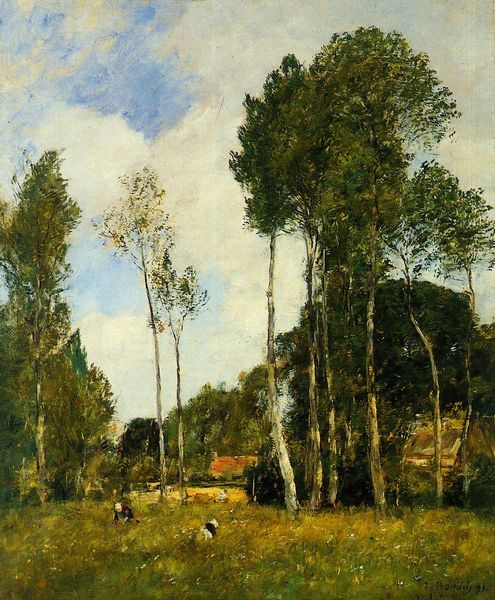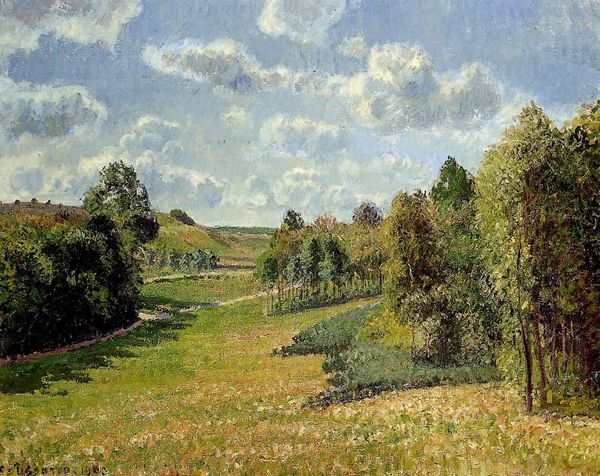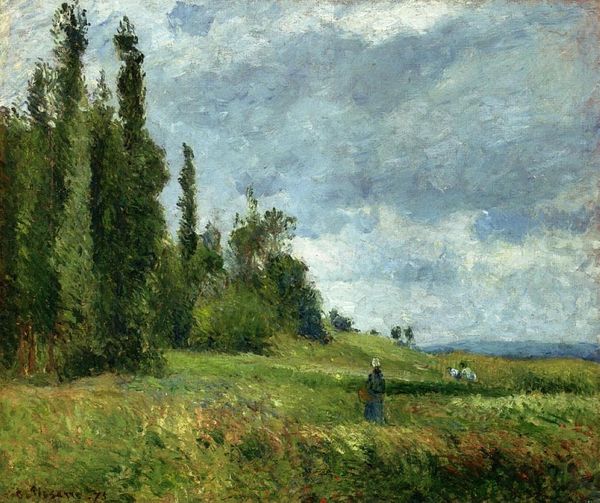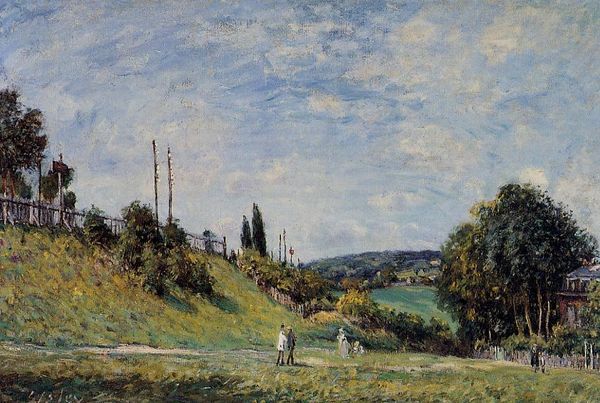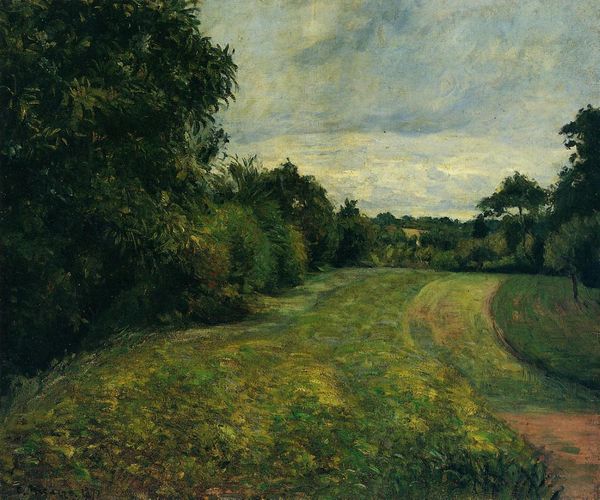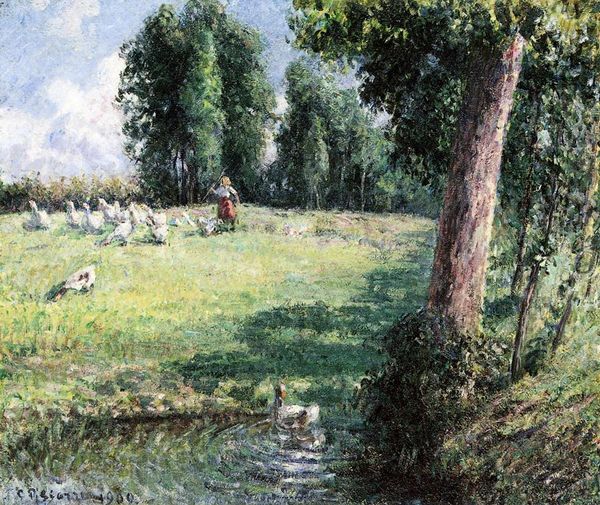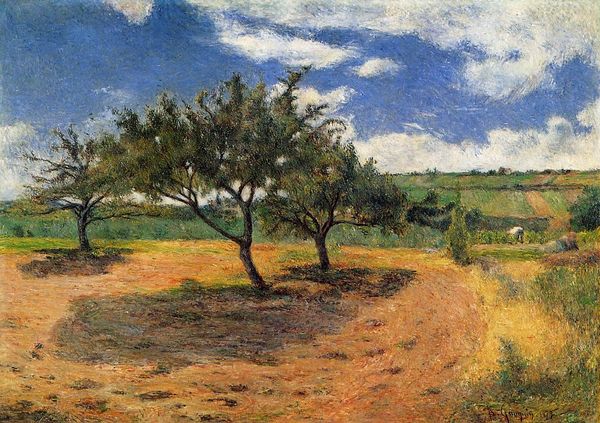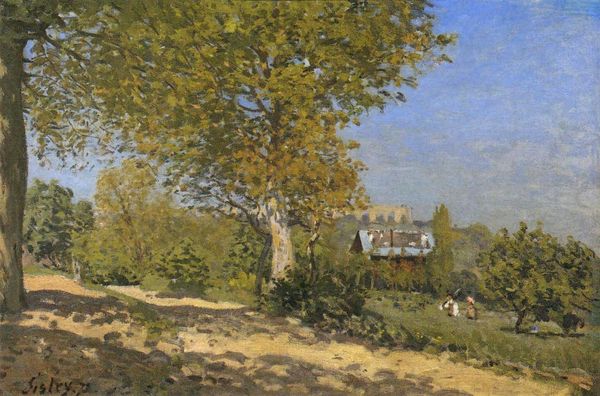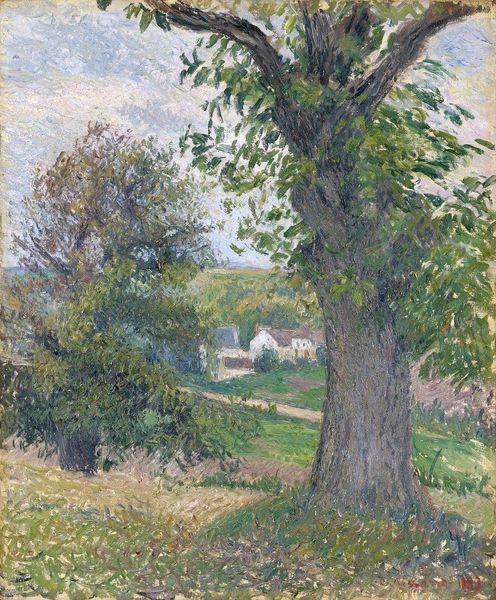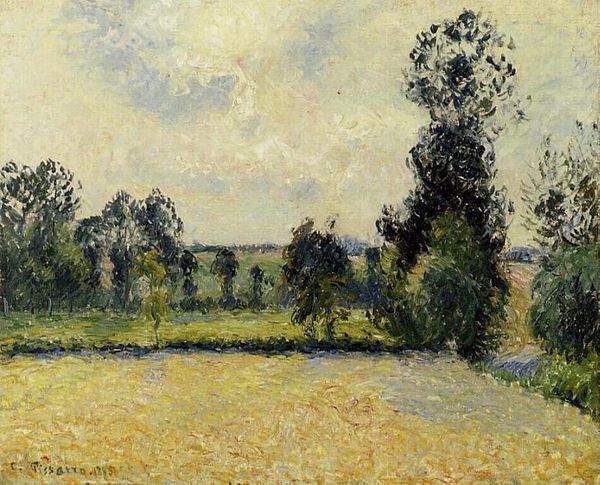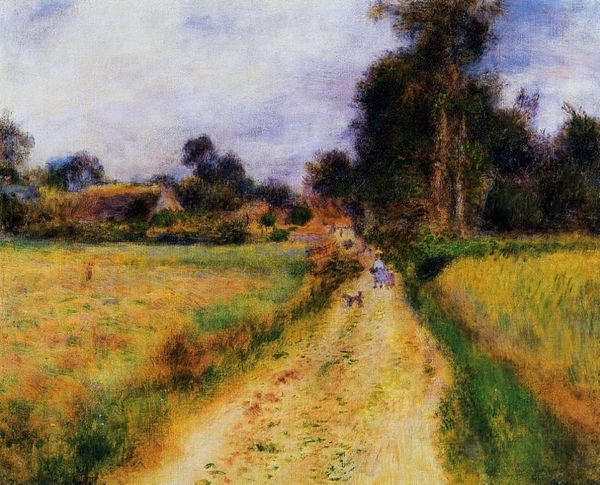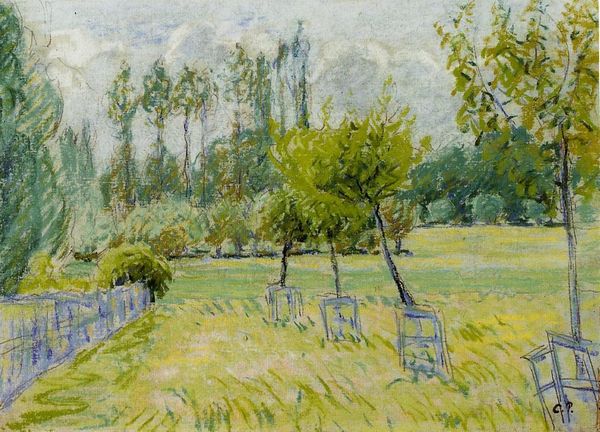
painting, plein-air, oil-paint
#
painting
#
impressionism
#
plein-air
#
oil-paint
#
landscape
#
figuration
#
cityscape
#
realism
Dimensions: 46 x 55 cm
Copyright: Public domain
Curator: Look at the way the light catches the field in Camille Pissarro’s “Spring Morning, Pontoise” from 1874. What's your initial reaction to this particular impression of landscape, rendered in oil on canvas? Editor: There’s an immediate, tangible quality—the textures in the grass, the strokes defining the trees, the overall sense of damp earth and hazy sunshine is quite captivating, isn’t it? It screams the physical act of painting en plein air. Curator: Absolutely. Considering Pissarro’s social politics, let's think about his commitment to depicting rural labor, as well. How are the gendered roles embedded in these seemingly simple landscapes? Editor: Well, that solitary figure, presumably female, in the distance, immediately evokes discussions around agrarian labor and its socio-economic implications, and then I start wondering about Pissarro's material conditions. How did this rural landscape reflect France’s burgeoning industrial economy and its demand for certain raw materials like the linseed oil from which these paints would have been processed? Curator: It's compelling to think of linseed oil as a physical trace of an industry so dependent upon resources. What you're raising pushes the image past mere aesthetic beauty and asks us to confront larger structures of power inherent in landscape depictions and the means by which these very depictions become possible, economically. I also think about gender and labor... how did his depictions of female workers challenge or perpetuate societal norms? Editor: I see it. The brushwork itself performs the labor of representation— layering and building up texture with small, visible strokes—it mimics the agricultural work of tilling and cultivating. You can sense his hand shaping the paint to resemble foliage, or the effects of natural sunlight in the scene. Curator: Yes, and thinking through a gendered lens… Does the painting uphold or disrupt dominant narratives of femininity associated with domesticity and passivity by placing them firmly outdoors, amidst labor and community? I’m struck by the fact that by grounding art-making in tangible experience, and rural labour, he seems to democratize art’s ability to make visible overlooked truths. Editor: Pissarro challenges the separation of art from material realities. We tend to remove artistic practices from broader conditions, but thinking of how linseed is extracted and how that work intersects with labor in rural communities really resonates with me. It is important to bring his politics back into his landscapes. Curator: Pissarro was using the canvas to ask us about the society it inhabits—to me that transforms his art. Editor: A really productive way of linking materiality and message, definitely a lot more here than first meets the eye!
Comments
No comments
Be the first to comment and join the conversation on the ultimate creative platform.
